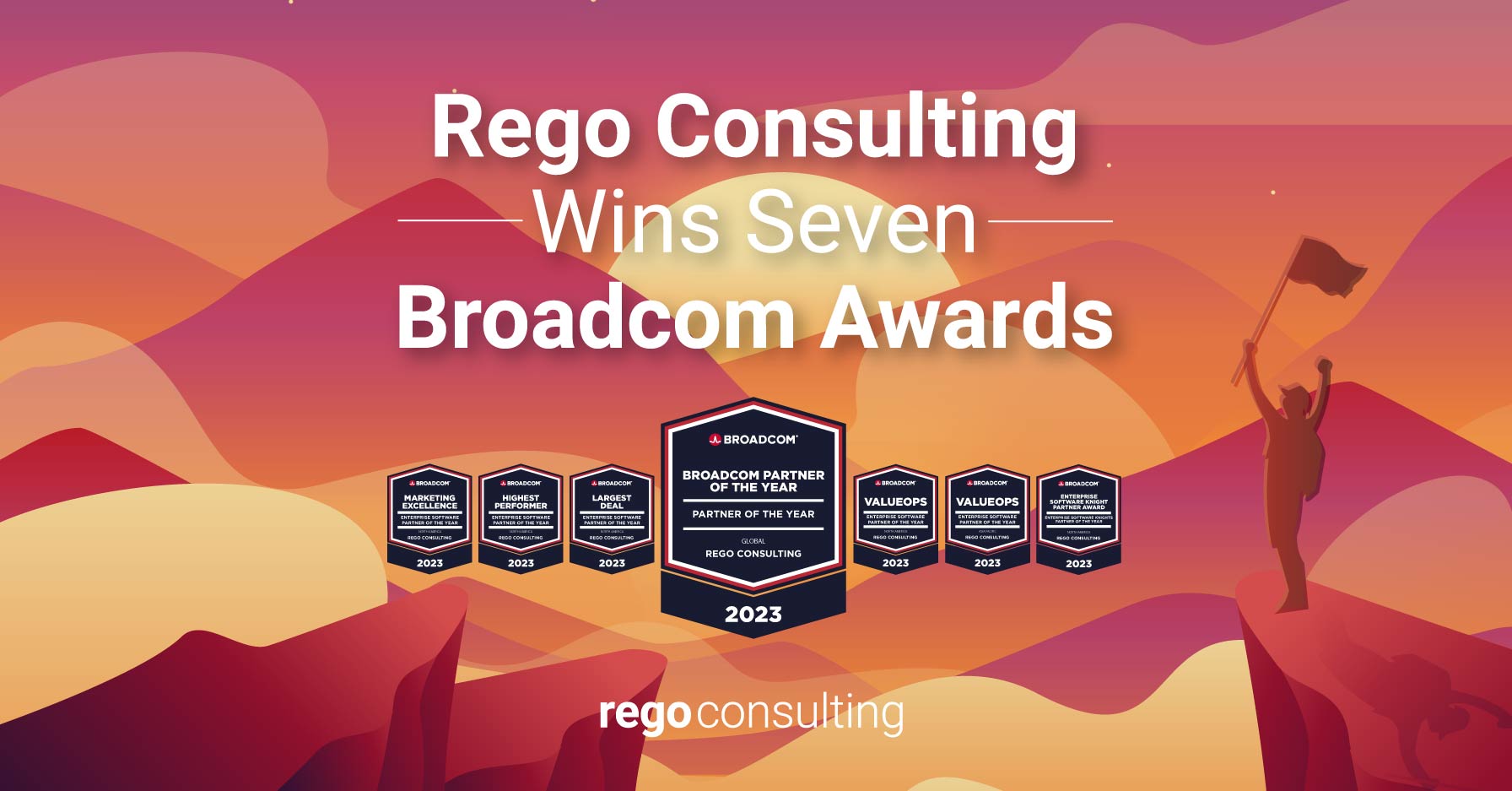
At its heart, project portfolio management (PPM) is a human story. It touches more people than other business applications. Executives, the PMO, Financial Management teams, and other stakeholders and teams all play an important part in leveraging PPM tools and processes. In order to ensure insightful reporting and solution adoption, it is important to use a transformative strategy with proven Management Operations Systems and Organizational Readiness Approaches. This strategy must be designed “for PPM, not just with PPM,” and it must empower business value, operational efficiencies, and secure governance for the PPM practice.
In this article, we will explore how to drive user adoption and valuable PPM outcomes by using Management Operations Systems (MOS) and Organizational Readiness approaches.
Planning Ahead
Early on, you will need to evaluate your business ecosystem and plan to mature at a pace your organization can manage and then leverage tested tools the gain the highest ROI (Return on Investment).
Achieving valuable PPM outcomes depends on many factors. This includes process and system maturity, budget access, leadership buy-in, resources skills, and capacities. Other considerations include how well you understand user pain and the value propositions.
Human elements that may impact outcomes include:
- office “politics”
- organizational changes
- undefined reporting structures
- reluctance to contribute
- challenges of changing tools
- transforming to DevOps and Agile methodologies
As practitioners, we must constantly plan for and manage change, which will lead to success instead of stagnation.
Driving User Adoption: Improving Poor Data to Achieve Great Outcomes
To achieve rich outcomes, we must define and visualize a Management Operating System (MOS) with Rhythm, Context, Flow, and Detailed Steps.
Some PPM practitioners use tools like MS Visio, LucidChart, or a stark format to create a visual model of the Management Operating System. When creating your MOS outline, keep in mind that PPM is as much an art as it is a science– it should not be an overly complicated analysis that accounts for every “what if” – it just needs to make sense to people.
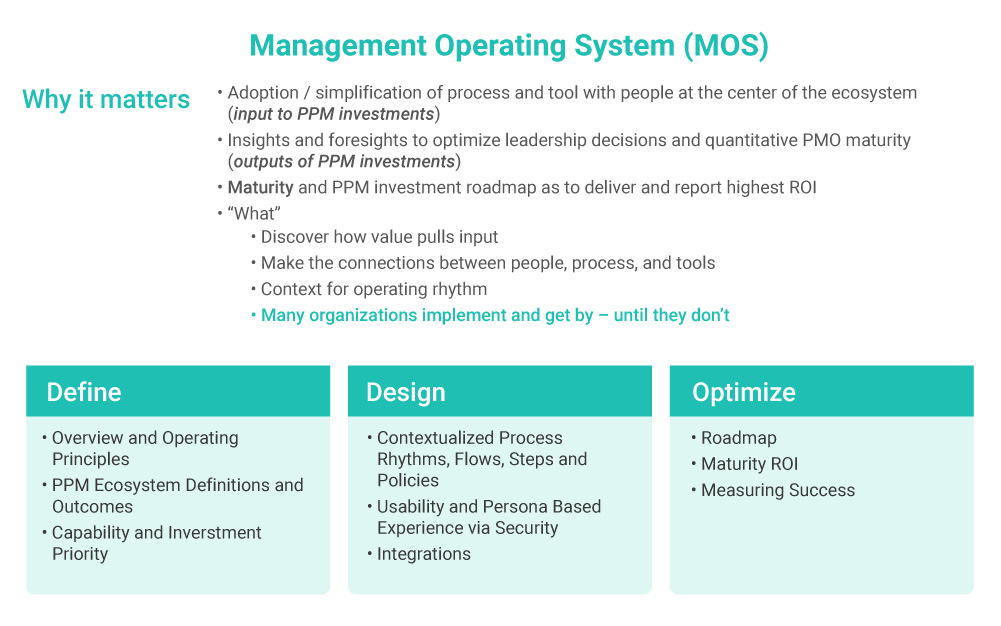
The investment of entering data is tied directly to the value of it being used.”
Here is an example of a white board level process flow (Operating Rhythm):
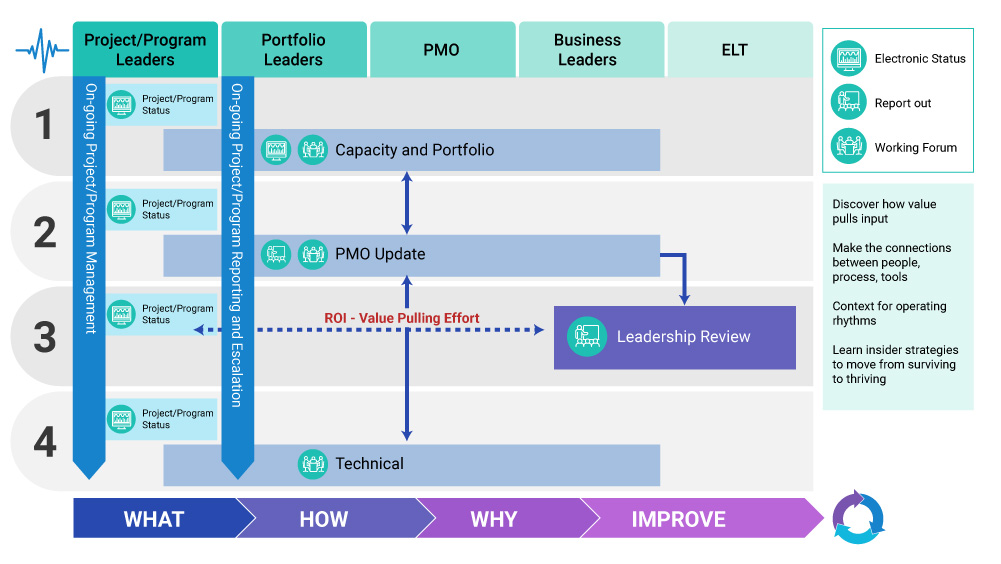
The goal of the Management Operations Systems is for organizations to understand the importance of process improvement and readiness as part of solution adoption. People need to see how solution value and tangible results affect adoption. They also need to know how their contributions help produce data that enables essential decision-making processes. Seeing the value of their contributions helps users adopt new software and processes.
It also helps if contributors can see a top-down view to provide context and insight when training and communicating. Project Leaders update their projects and create project statuses. In turn, they are reviewed and escalated by Portfolio Managers in a regular cadence. After that, the Portfolio Managers update the portfolio status for the PMO to review and it is presented to leadership. Every level, and every person entering data, is tied directly to the value being produced. When everyone understands the importance of their contributions, user adoption skyrockets.
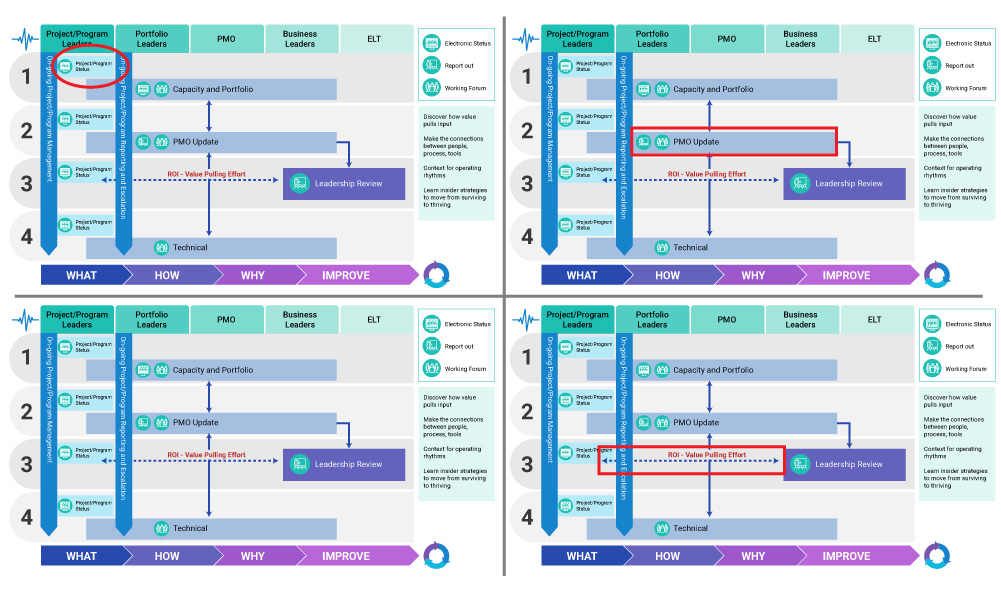
Management Operations Systems is People doing Processes that Profit
Below is an example of a white board level process flow. Though the relative top-down view is important, you may need to include more details. Remember, the goal is to resonate with people. You can use a whiteboard tool or a standard like Microsoft Smart Art to demonstrate process details, often in addition to Microsoft Excel. There are several outlines for process details; you can start with a whiteboard and then flesh it out and make it more consumable for training activities or everyday use. More details cans be added using Microsoft Visio or Excel. However, notice how the streamlined example below has more visual impact.
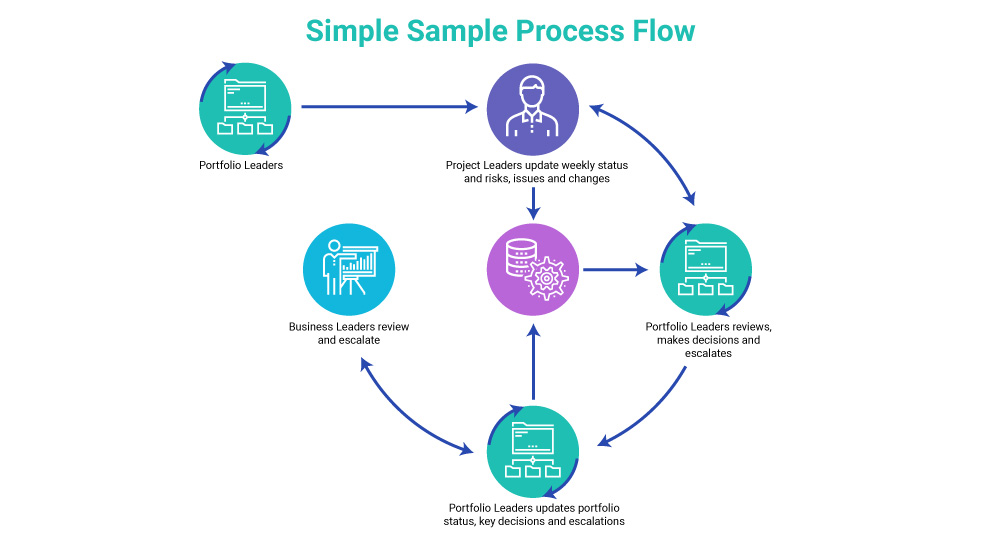
High Level Understanding Will Enable Standard Terminology and Consumable Details – Real World is Less About Being Totally Right and More About What is Right for Now
Evaluate multiple process styles and use those that resonate with users the most. Failure is expensive and leads to an equally impactful leadership response. By leveraging a thoughtful approach, you can build a solution for PPM that demonstrates value and becomes a part of all business processes. Getting it wrong can be costly, but a thoughtful approach is inexpensive and, as experience proves, critical to value delivery.
To learn more, see Part 1 and Part 2 of this three-part series.

Let Rego Be Your Guide
Are you ready to explore ways to expand the value of your PPM, Work Management, TBM (Technology Business Management), or Agile solution? Contact Rego’s expert consultants for a no-pressure conversation to find the training, solution, or process improvement to meet your needs.
Rego offers webinars, free training classes, and white papers.






